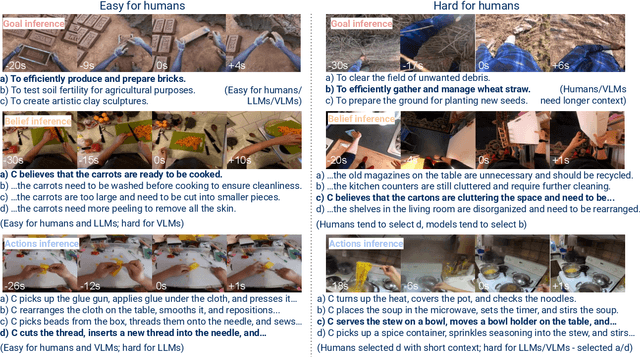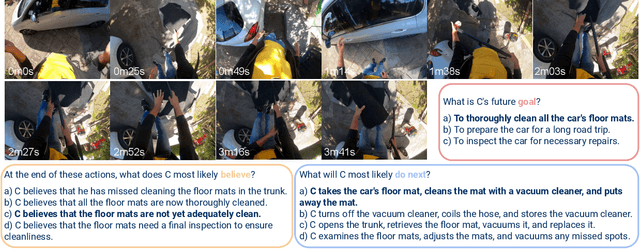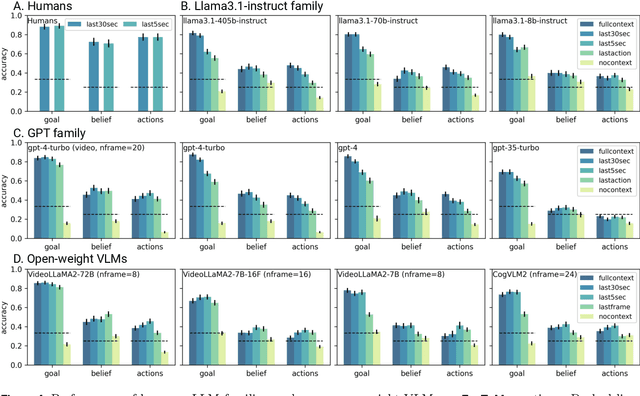Yuxuan Li
JOGS: Joint Optimization of Pose Estimation and 3D Gaussian Splatting
Oct 30, 2025Abstract:Traditional novel view synthesis methods heavily rely on external camera pose estimation tools such as COLMAP, which often introduce computational bottlenecks and propagate errors. To address these challenges, we propose a unified framework that jointly optimizes 3D Gaussian points and camera poses without requiring pre-calibrated inputs. Our approach iteratively refines 3D Gaussian parameters and updates camera poses through a novel co-optimization strategy, ensuring simultaneous improvements in scene reconstruction fidelity and pose accuracy. The key innovation lies in decoupling the joint optimization into two interleaved phases: first, updating 3D Gaussian parameters via differentiable rendering with fixed poses, and second, refining camera poses using a customized 3D optical flow algorithm that incorporates geometric and photometric constraints. This formulation progressively reduces projection errors, particularly in challenging scenarios with large viewpoint variations and sparse feature distributions, where traditional methods struggle. Extensive evaluations on multiple datasets demonstrate that our approach significantly outperforms existing COLMAP-free techniques in reconstruction quality, and also surpasses the standard COLMAP-based baseline in general.
Latent learning: episodic memory complements parametric learning by enabling flexible reuse of experiences
Sep 19, 2025Abstract:When do machine learning systems fail to generalize, and what mechanisms could improve their generalization? Here, we draw inspiration from cognitive science to argue that one weakness of machine learning systems is their failure to exhibit latent learning -- learning information that is not relevant to the task at hand, but that might be useful in a future task. We show how this perspective links failures ranging from the reversal curse in language modeling to new findings on agent-based navigation. We then highlight how cognitive science points to episodic memory as a potential part of the solution to these issues. Correspondingly, we show that a system with an oracle retrieval mechanism can use learning experiences more flexibly to generalize better across many of these challenges. We also identify some of the essential components for effectively using retrieval, including the importance of within-example in-context learning for acquiring the ability to use information across retrieved examples. In summary, our results illustrate one possible contributor to the relative data inefficiency of current machine learning systems compared to natural intelligence, and help to understand how retrieval methods can complement parametric learning to improve generalization.
Representation biases: will we achieve complete understanding by analyzing representations?
Jul 29, 2025Abstract:A common approach in neuroscience is to study neural representations as a means to understand a system -- increasingly, by relating the neural representations to the internal representations learned by computational models. However, a recent work in machine learning (Lampinen, 2024) shows that learned feature representations may be biased to over-represent certain features, and represent others more weakly and less-consistently. For example, simple (linear) features may be more strongly and more consistently represented than complex (highly nonlinear) features. These biases could pose challenges for achieving full understanding of a system through representational analysis. In this perspective, we illustrate these challenges -- showing how feature representation biases can lead to strongly biased inferences from common analyses like PCA, regression, and RSA. We also present homomorphic encryption as a simple case study of the potential for strong dissociation between patterns of representation and computation. We discuss the implications of these results for representational comparisons between systems, and for neuroscience more generally.
MiniCPM4: Ultra-Efficient LLMs on End Devices
Jun 09, 2025Abstract:This paper introduces MiniCPM4, a highly efficient large language model (LLM) designed explicitly for end-side devices. We achieve this efficiency through systematic innovation in four key dimensions: model architecture, training data, training algorithms, and inference systems. Specifically, in terms of model architecture, we propose InfLLM v2, a trainable sparse attention mechanism that accelerates both prefilling and decoding phases for long-context processing. Regarding training data, we propose UltraClean, an efficient and accurate pre-training data filtering and generation strategy, and UltraChat v2, a comprehensive supervised fine-tuning dataset. These datasets enable satisfactory model performance to be achieved using just 8 trillion training tokens. Regarding training algorithms, we propose ModelTunnel v2 for efficient pre-training strategy search, and improve existing post-training methods by introducing chunk-wise rollout for load-balanced reinforcement learning and data-efficient tenary LLM, BitCPM. Regarding inference systems, we propose CPM.cu that integrates sparse attention, model quantization, and speculative sampling to achieve efficient prefilling and decoding. To meet diverse on-device requirements, MiniCPM4 is available in two versions, with 0.5B and 8B parameters, respectively. Sufficient evaluation results show that MiniCPM4 outperforms open-source models of similar size across multiple benchmarks, highlighting both its efficiency and effectiveness. Notably, MiniCPM4-8B demonstrates significant speed improvements over Qwen3-8B when processing long sequences. Through further adaptation, MiniCPM4 successfully powers diverse applications, including trustworthy survey generation and tool use with model context protocol, clearly showcasing its broad usability.
AutoReproduce: Automatic AI Experiment Reproduction with Paper Lineage
May 27, 2025Abstract:Efficient experiment reproduction is critical to accelerating progress in artificial intelligence. However, the inherent complexity of method design and training procedures presents substantial challenges for automation. Notably, reproducing experiments often requires implicit domain-specific knowledge not explicitly documented in the original papers. To address this, we introduce the paper lineage algorithm, which identifies and extracts implicit knowledge from the relevant references cited by the target paper. Building on this idea, we propose AutoReproduce, a multi-agent framework capable of automatically reproducing experiments described in research papers in an end-to-end manner. AutoReproduce enhances code executability by generating unit tests alongside the reproduction process. To evaluate the reproduction capability, we construct ReproduceBench, a benchmark annotated with verified implementations, and introduce novel evaluation metrics to assess both the reproduction and execution fidelity. Experimental results demonstrate that AutoReproduce outperforms the existing strong agent baselines on all five evaluation metrics by a peak margin of over $70\%$. In particular, compared to the official implementations, AutoReproduce achieves an average performance gap of $22.1\%$ on $89.74\%$ of the executable experiment runs. The code will be available at https://github.com/AI9Stars/AutoReproduce.
DISTA-Net: Dynamic Closely-Spaced Infrared Small Target Unmixing
May 25, 2025Abstract:Resolving closely-spaced small targets in dense clusters presents a significant challenge in infrared imaging, as the overlapping signals hinder precise determination of their quantity, sub-pixel positions, and radiation intensities. While deep learning has advanced the field of infrared small target detection, its application to closely-spaced infrared small targets has not yet been explored. This gap exists primarily due to the complexity of separating superimposed characteristics and the lack of an open-source infrastructure. In this work, we propose the Dynamic Iterative Shrinkage Thresholding Network (DISTA-Net), which reconceptualizes traditional sparse reconstruction within a dynamic framework. DISTA-Net adaptively generates convolution weights and thresholding parameters to tailor the reconstruction process in real time. To the best of our knowledge, DISTA-Net is the first deep learning model designed specifically for the unmixing of closely-spaced infrared small targets, achieving superior sub-pixel detection accuracy. Moreover, we have established the first open-source ecosystem to foster further research in this field. This ecosystem comprises three key components: (1) CSIST-100K, a publicly available benchmark dataset; (2) CSO-mAP, a custom evaluation metric for sub-pixel detection; and (3) GrokCSO, an open-source toolkit featuring DISTA-Net and other models. Our code and dataset are available at https://github.com/GrokCV/GrokCSO.
Assessing Collective Reasoning in Multi-Agent LLMs via Hidden Profile Tasks
May 15, 2025Abstract:Multi-agent systems built on large language models (LLMs) promise enhanced problem-solving through distributed information integration, but also risk replicating collective reasoning failures observed in human groups. Yet, no theory-grounded benchmark exists to systematically evaluate such failures. In this paper, we introduce the Hidden Profile paradigm from social psychology as a diagnostic testbed for multi-agent LLM systems. By distributing critical information asymmetrically across agents, the paradigm reveals how inter-agent dynamics support or hinder collective reasoning. We first formalize the paradigm for multi-agent decision-making under distributed knowledge and instantiate it as a benchmark with nine tasks spanning diverse scenarios, including adaptations from prior human studies. We then conduct experiments with GPT-4.1 and five other leading LLMs, including reasoning-enhanced variants, showing that multi-agent systems across all models fail to match the accuracy of single agents given complete information. While agents' collective performance is broadly comparable to that of human groups, nuanced behavioral differences emerge, such as increased sensitivity to social desirability. Finally, we demonstrate the paradigm's diagnostic utility by exploring a cooperation-contradiction trade-off in multi-agent LLM systems. We find that while cooperative agents are prone to over-coordination in collective settings, increased contradiction impairs group convergence. This work contributes a reproducible framework for evaluating multi-agent LLM systems and motivates future research on artificial collective intelligence and human-AI interaction.
TW-CRL: Time-Weighted Contrastive Reward Learning for Efficient Inverse Reinforcement Learning
Apr 08, 2025Abstract:Episodic tasks in Reinforcement Learning (RL) often pose challenges due to sparse reward signals and high-dimensional state spaces, which hinder efficient learning. Additionally, these tasks often feature hidden "trap states" -- irreversible failures that prevent task completion but do not provide explicit negative rewards to guide agents away from repeated errors. To address these issues, we propose Time-Weighted Contrastive Reward Learning (TW-CRL), an Inverse Reinforcement Learning (IRL) framework that leverages both successful and failed demonstrations. By incorporating temporal information, TW-CRL learns a dense reward function that identifies critical states associated with success or failure. This approach not only enables agents to avoid trap states but also encourages meaningful exploration beyond simple imitation of expert trajectories. Empirical evaluations on navigation tasks and robotic manipulation benchmarks demonstrate that TW-CRL surpasses state-of-the-art methods, achieving improved efficiency and robustness.
Physically Ground Commonsense Knowledge for Articulated Object Manipulation with Analytic Concepts
Mar 30, 2025Abstract:We human rely on a wide range of commonsense knowledge to interact with an extensive number and categories of objects in the physical world. Likewise, such commonsense knowledge is also crucial for robots to successfully develop generalized object manipulation skills. While recent advancements in Large Language Models (LLM) have showcased their impressive capabilities in acquiring commonsense knowledge and conducting commonsense reasoning, effectively grounding this semantic-level knowledge produced by LLMs to the physical world to thoroughly guide robots in generalized articulated object manipulation remains a challenge that has not been sufficiently addressed. To this end, we introduce analytic concepts, procedurally defined upon mathematical symbolism that can be directly computed and simulated by machines. By leveraging the analytic concepts as a bridge between the semantic-level knowledge inferred by LLMs and the physical world where real robots operate, we are able to figure out the knowledge of object structure and functionality with physics-informed representations, and then use the physically grounded knowledge to instruct robot control policies for generalized, interpretable and accurate articulated object manipulation. Extensive experiments in both simulation and real-world environments demonstrate the superiority of our approach.
EgoToM: Benchmarking Theory of Mind Reasoning from Egocentric Videos
Mar 28, 2025



Abstract:We introduce EgoToM, a new video question-answering benchmark that extends Theory-of-Mind (ToM) evaluation to egocentric domains. Using a causal ToM model, we generate multi-choice video QA instances for the Ego4D dataset to benchmark the ability to predict a camera wearer's goals, beliefs, and next actions. We study the performance of both humans and state of the art multimodal large language models (MLLMs) on these three interconnected inference problems. Our evaluation shows that MLLMs achieve close to human-level accuracy on inferring goals from egocentric videos. However, MLLMs (including the largest ones we tested with over 100B parameters) fall short of human performance when inferring the camera wearers' in-the-moment belief states and future actions that are most consistent with the unseen video future. We believe that our results will shape the future design of an important class of egocentric digital assistants which are equipped with a reasonable model of the user's internal mental states.
 Add to Chrome
Add to Chrome Add to Firefox
Add to Firefox Add to Edge
Add to Edge